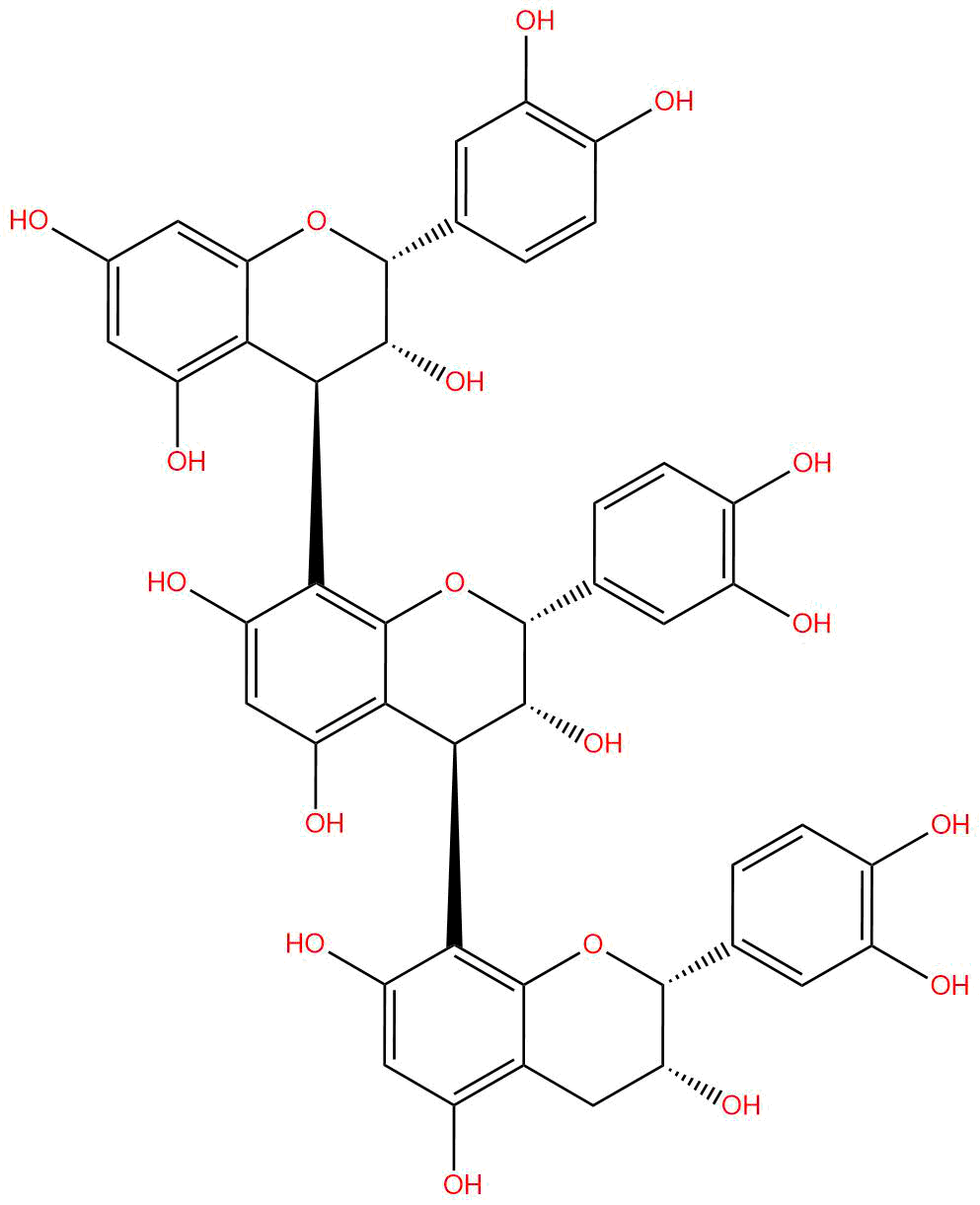
Procyanidin C1CAS No.:37064-30-5
|
||||||||||
 |
|
|
||||||||

| Catalogue No.: | BP1149 |
| Formula: | C45H38O18 |
| Mol Weight: | 866.781 |
Product name: Procyanidin C1
Synonym name: Proanthocyanidin C1; 65085-09-8
Catalogue No.: BP1149
Cas No.: 37064-30-5
Formula: C45H38O18
Mol Weight: 866.781
Botanical Source:
Physical Description:
Type of Compound: Procyanidins
Purity: 95%~99%
Analysis Method: HPLC-DAD or/and HPLC-ELSD
Identification Method: Mass, NMR
Packing: Brown vial or HDPE plastic bottle
Storage: Store in a well closed container, protected from air and light. Put into refrigerate or freeze for long term storage.
Whenever possible, you should prepare and use solutions on the same day. However, if you need to make up stock solutions in advance, we recommend that you store the solution as aliquots in tightly sealed vials at -20℃. Generally, these will be useable for up to two weeks.
The product could be supplied from milligrams to grams, up to kilograms
Inquire for bulk scale.
Descriptions:
In vitro, procyanidin C1 (PC1) dose-dependently decreased Fc epsilon RI-mediated degranulation and cytokine production of mast cells, inhibited tyrosine phosphorylation of Syk and linker for activation of T cells, and the ROS generation in stimulated mast cells.PC1 suppresses Fc epsilon RI-mediated mast cell activation by inhibiting intracellular signaling pathways, These observations provide evidence for the anti-allergenic effects of the procyanidin-enriched apple extract.[1]
Procyanidin C1-induced vasorelaxation is associated with the activation of the calcium-dependent NO/cGMP pathway, involving potassium channel activation, thus, it may represent a novel and potentially therapeutically relevant compound for the treatment of cardiovascular diseases.[2]
Procyanidin C1 is the main active compound in the CC extract responsible for EMT inhibition and that procyanidin C1 could be useful as a lead compound to develop inhibitors of cancer metastasis and other diseases related to EMT.[3]
Procyanidin C1 has anti-inflammatory effects, can inhibit IKKb activity in vitro and reduce the LPS-induced production of ROS, thus, it exerts the anti-inflammatory effects by inhibiting ERK1/2 and IKKb activity.[4]
References:
[1] Nakano N, Nishiyama C, Tokura T, et al. Int Arch Allergy Immun, 2008, 147(3):213-21.
[2] Byun E B, Sung N Y, Yang M S, et al. J Med Food, 2014, 17(7):742-8.
[3] Kin R, Kato S, Kaneto N, et al. Int J Oncol, 2013, 43(6):1901-6.
[4] Terra X, Palozza P, Fernandezlarrea J, et al. Free Rad Res, 2011, 45(5):611-9.
[5] Li M, Guo Q, Zhang X. J Pharm Analysis, 2015 (04): 644-8.
HPLC of Procyanidin C1

HNMR of Procyanidin C1
